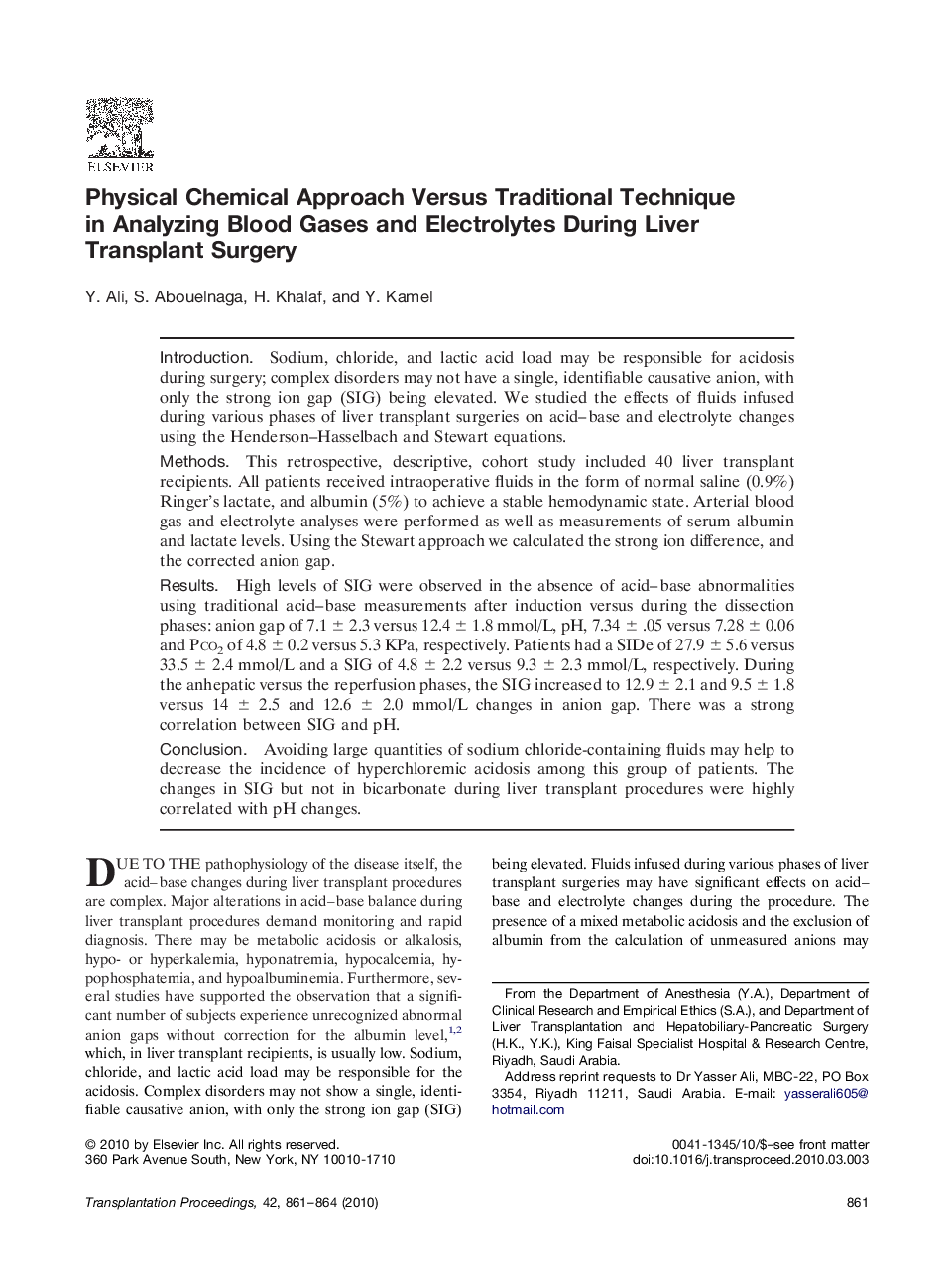| Article ID | Journal | Published Year | Pages | File Type |
|---|---|---|---|---|
| 4258150 | Transplantation Proceedings | 2010 | 4 Pages |
IntroductionSodium, chloride, and lactic acid load may be responsible for acidosis during surgery; complex disorders may not have a single, identifiable causative anion, with only the strong ion gap (SIG) being elevated. We studied the effects of fluids infused during various phases of liver transplant surgeries on acid–base and electrolyte changes using the Henderson–Hasselbach and Stewart equations.MethodsThis retrospective, descriptive, cohort study included 40 liver transplant recipients. All patients received intraoperative fluids in the form of normal saline (0.9%) Ringer's lactate, and albumin (5%) to achieve a stable hemodynamic state. Arterial blood gas and electrolyte analyses were performed as well as measurements of serum albumin and lactate levels. Using the Stewart approach we calculated the strong ion difference, and the corrected anion gap.ResultsHigh levels of SIG were observed in the absence of acid–base abnormalities using traditional acid–base measurements after induction versus during the dissection phases: anion gap of 7.1 ± 2.3 versus 12.4 ± 1.8 mmol/L, pH, 7.34 ± .05 versus 7.28 ± 0.06 and Pco2 of 4.8 ± 0.2 versus 5.3 KPa, respectively. Patients had a SIDe of 27.9 ± 5.6 versus 33.5 ± 2.4 mmol/L and a SIG of 4.8 ± 2.2 versus 9.3 ± 2.3 mmol/L, respectively. During the anhepatic versus the reperfusion phases, the SIG increased to 12.9 ± 2.1 and 9.5 ± 1.8 versus 14 ± 2.5 and 12.6 ± 2.0 mmol/L changes in anion gap. There was a strong correlation between SIG and pH.ConclusionAvoiding large quantities of sodium chloride-containing fluids may help to decrease the incidence of hyperchloremic acidosis among this group of patients. The changes in SIG but not in bicarbonate during liver transplant procedures were highly correlated with pH changes.
